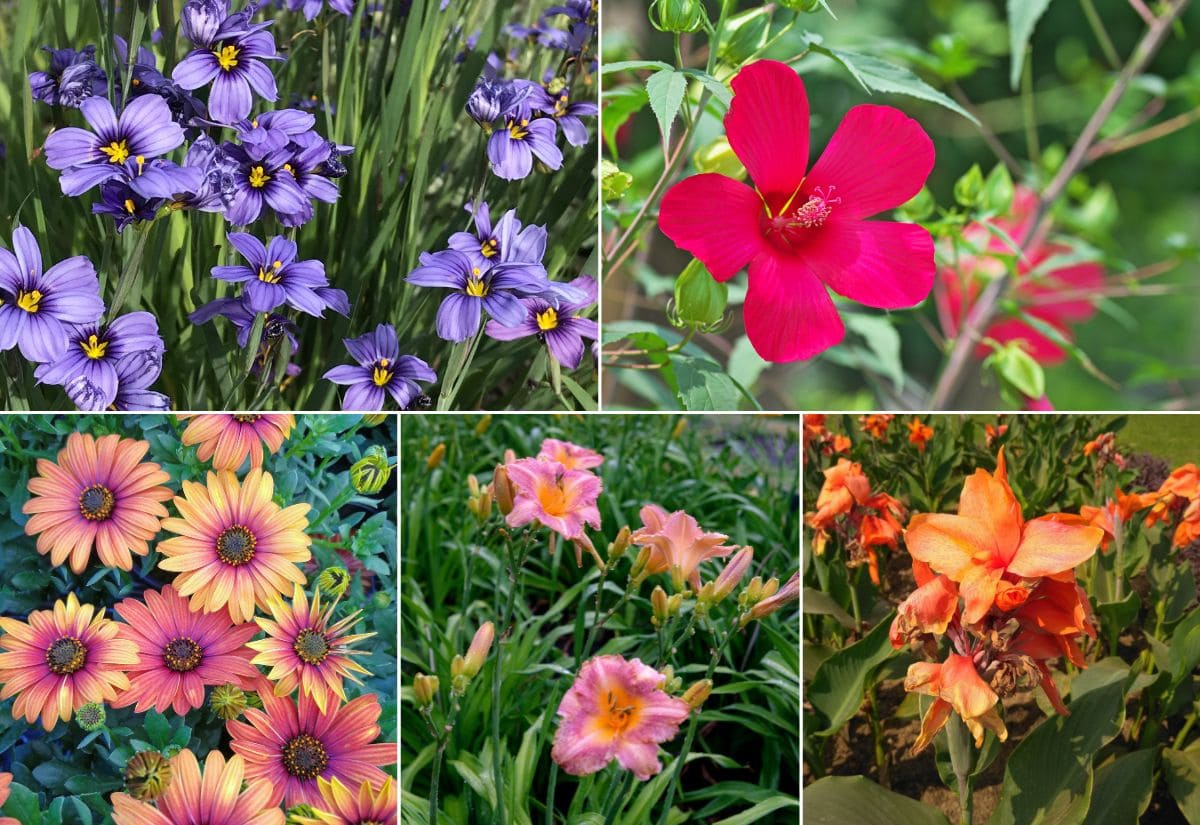
Ah, full sun and USDA Zone 9—you’re the envy of many a gardener, indeed! You’re practically handed a palette of some of the most vibrant, exotic, and downright show-stopping perennials one could ask for. Picture your landscape as a subtropical paradise, with plants boasting luscious blooms and intriguing foliage.
From succulents to herbaceous species, Zone 9 lets you go bold. You can showcase rare beauties and even stately houseplants that revel in the climate. Plus, you can also mix them with temperate varieties that tolerate heat. It looks like the best of both worlds!
So yes, while it may seem like a horticultural utopia, a Zone 9 garden does come with its own set of challenges. The same balmy winters that are a gardener’s dream can make the hot and often sultry summers a test for your plants.
And let’s not forget about the varied precipitation; depending on your specific location within Zone 9, you might find yourself in an area that’s either parched or prone to heavy rainfall. This calls for a strategic approach in selecting perennials that won’t wilt under the sun’s intense rays or succumb to root rot in overly wet conditions.
Desiring a lush and vibrant garden in this zone isn’t just about planting what catches your eye; it’s about making savvy, informed choices.
Opting for the right plants in this low-lying hardiness zone can make all the difference between a labor-intensive garden and a low-maintenance oasis. To steer you in the right direction, we’ve curated a list of 15 resilient perennial plants and flowers that excel in USDA Zone 9.
These selections can withstand Zone 9’s unique challenges, such as unpredictable rainfall, poor soil quality, and even the occasional cold snap, yet return year after year with stunning blooms.
Let’s first explore USDA hardiness Zone 9 in some detail, though…
Understanding USDA climate zone 9
The simple description of the climate in USDA hardiness zone 9 is “warm in winter and hot in summer”. But we can (and must) be a bit more detailed and precise than this, if you want to grow appropriate perennials in your garden, so…
USDA Hardiness Zone 9 Temperatures
The hardiness zones of the United States Department of Agriculture are based on the average minimum temperatures at ground level you can expect in an area. In zone 9, this is between 20 and 30oF, or -6.7 and -1.1oC.
But you can expect the odd colder night, as well as overall warmer winters. Plants that grow in this zone, including perennials, can usually withstand short spells of unusually colder weather, so, don’t worry.
What is more, each USDA zone is divided into two subzones, and the same applies to 9, if you wish to be more specific.
If you want to know in which climate zone is your garden, you can check it out here.
But this is not the whole picture…
What Is USDA Hardiness Zone 9 Really Like?
USDA hardiness zone 9 can be quite varied… While it is still on the temperate side, it is also quite mild, but it can also have subtropical traits. What is more, there is a big difference in precipitations, and that means a lot if you need to choose a perennial that can grow well in your garden.
A simple example, to give you the range of actually different climates… Most of Florida is in USDA hardiness zone 9, but it is very humid and even wet… Similarly, Las Vegas os in USDA hardiness zone 9a, and it is very dry – in the Mojave Desert, in fact!
This huge difference will have a great impact on your choice of perennials, preferring drought tolerant varieties on the West Coast, and more subtropical and humid loving species on the East Coast…
As you can see, plenty of sunlight is not all you need to consider in your choice of perennials.
Where Is USDA Hardiness Zone 9?
In the United States of America, USDA hardiness zone 9 forms a crescent at the south of the confederation, on border states and on the two oceans.
In USDA hardiness zone 9 you will find: most of the Florida peninsula, in fact, all the way from Gainesville to Fort Myers, a small strip at on the coast of southeast Mississippi, all the coastal area of Louisiana, the south of Texas, the area around a Tucson, down to the border with Mexico in Arizona, the western side of Utah, the area around Las Vegas in Nevada, central areas of California, the coastal area of Oregon, including Salem and Portland, and the coast of Washington, including Seattle.
USDA hardiness zone 9 also covers coastal regions in the north of the Mediterranean Sea, including Tuscany, the Riviera (Italian and French) and the Barcelona area. But it also covers tall the coasts of Ireland.
Once again, you get dry and sunny regions, but also wet and windy ones…
So, keeping all this in mind, you can now choose the best varieties of perennials for zone 9 you can grow in your sunny garden…
15 Sun-Loving Perennials for USDA Zone 9 Gardens
If a sunny garden in USDA hardiness zone 9 can be a great opportunity, you need to pick the right varieties for specific growing conditions and landscaping styles, and these are really fabulous!
So here are some really 15 stunning perennial varieties you can grow in your Sun kissed garden in USDA zone 9!
1: Golden Club (Orontium aquaticum)
We can start with a very unusual and Sun loving perennial you can grow in zone 9… Golden club is an aquatic plant with a very exotic personality… It will produce spectacular lance shaped, semi glossy and bright green leaves on the surface of ponds, each being about 12 inches in length (30 cm) and forming tropical looking floating clumps…
As soon as winter is over, this native of the eastern United States (including central Florida, where it is quite common), produces its blossom. And it is weird too. Thick and fleshy white stems come from the base of the plant and they bend, like golf clubs, indeed.
And the saffron yellow small flowers that cover the top halves of these juicy stems make them look like crooked matchsticks! But quite big, because the inflorescence is about 6 inches long (15 cm). They will turn onto decorative green berry like seed pods.
As long as you have a pond even shallow, you can easily grow golden club in all areas of USDA zone 9, arid or dry and in full Sun. It will also spread underwater with strong stolons, and you could even plant it in slow moving streams!
2: Tiger Flower (Togridiax pavonia)
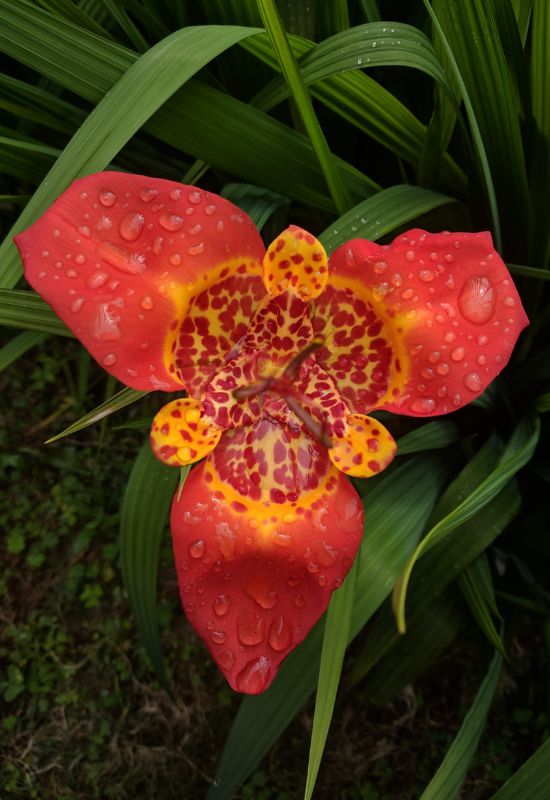
To bring the exotic potential of sunny USDA zone 9 gardens, tiger flower is the perfect bulbous perennial… Its binomial (scientific) name refers to two animals, of course, tiger and peacock…
And this is due to its flowers, of course… With three large round petals, the blossom also has three smaller ones that form a cluster in the center, where you will see spots, like in a leopard, in fact…
Maybe they got their big cats wrong, but its super showy effect is guaranteed, also thanks to the very bright colors it displays, and the waxy surface of the blossoms themselves, each reaching about 2 inches across (5.0 cm).
The palette it offers goes from white (like in the cultivar ‘Alba’) to strong crimson red, but there are also vibrant yellow varieties (like ‘Gold’), energetic magenta pink (‘Liliacea’) and more sophisticated shades…
For instance, ‘Canariensis’ is obviously canary yellow, while ‘Speciosa’ is coral peach. The long, blade like and upright green leaves have decorative vertical grooves for extra texture.
Easy to grow and drought tolerant, super exotic tiger flower originates from Mexico and Central America, thus it will suit USDA zone 9 sunny gardens on the dry West Coast or Mediterranean region, for beds, borders or containers.
3: Daylily (Hemerocallis spp.)
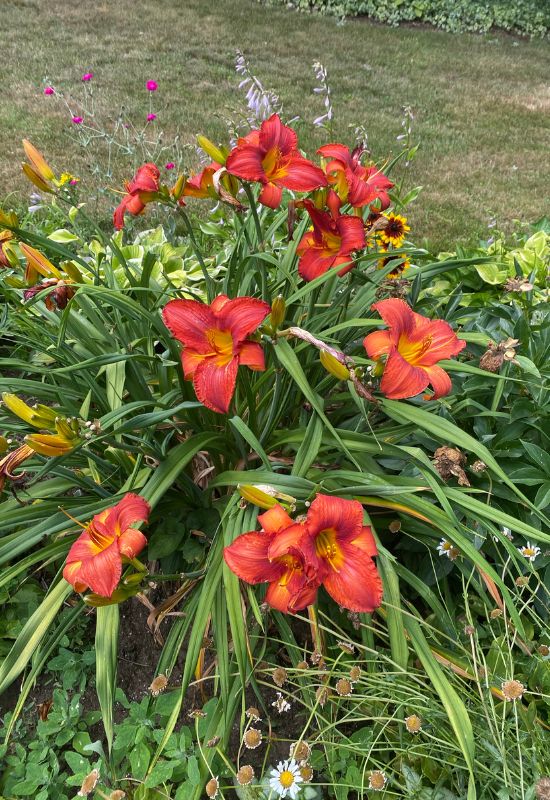
For both exotic and temperate looking sunny gardens in USDA zone 9 (and not only), daylily is just the perfect perennial. To start with, your choice is huge, as there are over 60,000 registered cultivars!
Of course, what changes is mainly the coloring of the showy flowers: reds, oranges, yellows, pinks and roses, purples, in all possible tonalities, from super bright and bold to delicate and unusual… and don’t forget white!
Add bicolor varieties and you understand how much you can do with this amazing decorative plant… And double flowers too can grace your green haven, even in dry areas…
Each lily like flower head is a spectacle, up to a whopping 8 inches across (20 cm). They only stay open for 24 hours, but they are replaced constantly throughout the blooming season.
You can even stagger them by planting different types, from very early (that start in March) to very late (in August), and have amazing spectacles all through the season! The lush and fleshy strap like foliage also helps fill borders and give aflorid appearance to your sun bathed yard… And in zone 9 it can even be evergreen!
Wonderful in borders, daylilies are easy to grow and you can also enjoy them in flower beds or containers. They are a garden classic indeed… It tolerates both dry spells and summer humidity, excellent for California, but also Florida!
4: Scarlet Rose Mallow (Hibiscus coccineus)
Scarlet rose mallow is perfect for sunny gardens in USDA hardiness zone 9… To start with, it is also called Texas star, but it is rally native of Florida, so, in a way it follows the theme of our climate region.
Unlike other hibiscus species, it is not a shrub or even a small tree, but a woody perennial. As the name suggests, the blooms look like stars, with a lovely undulation on the spaced out bright red petals, roughly diamond shaped, which makes them very sculptural indeed!
The flowers are actually quite big and showy, up to 6 inches wide, or 15 centimeters… And the long, straight and protruding reproductive column is of the same tonality, impossible to miss… Hummingbirds, butterflies and other pollinators love them, and the floral display lasts for a very long time, starting in early summer and continuing into fall!
The foliage though may get you into trouble; not because it is lush and green, but because it looks very much like that of Cannabis sativa, also known as marihuana…
Scarlet rose mallow is ideal for wet zone 9 areas, like Florida, indeed, where it grows spontaneously, because it tolerates wet and even boggy soil. But as long as you can water it regularly, there is no reason why you can’t grow this sun loving and exotic looking perennial in dry regions as well!
5: Pinks (Dianthus spp.)
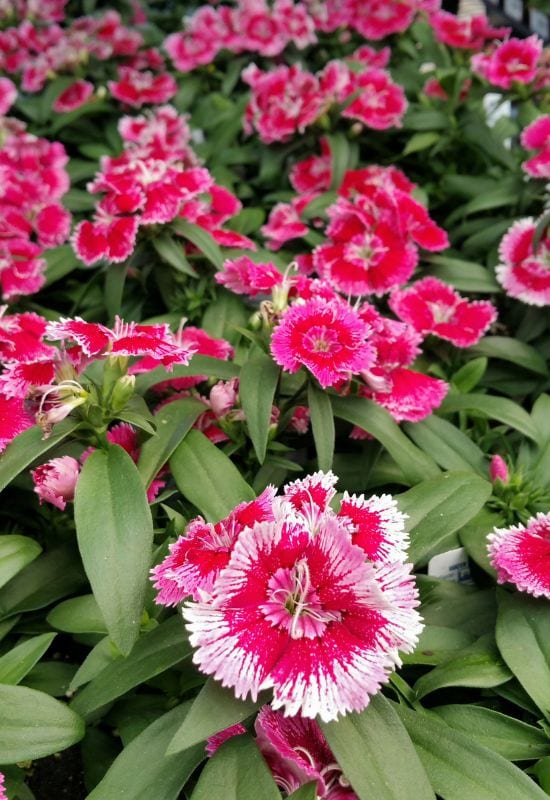
For a more traditional look in your sunny flower beds in USDA hardiness zone 9, why not choose one of the many pink varieties there are on offer? These small carnations (because this is what they are) love sunshine and they give you lots of frilly blooms for a long time, usually from May to July.
They may stop when the weather gets too hot, but in our climate zone they are known to give you an extra burst when it cools down again. And some are very fragrant indeed, the now historical legacy variety ‘Mrs. Sinkins’ and its equally white descendant ‘Memories’ (easier to find) are clear examples of the most intoxicating scent in the whole world.
For other shades, ‘Passion’ gives you intense red on velvety and rounded petals and ‘Candy Floss’ a delicate rose. Bicolor varieties also combine a palette of intriguing tonalities.. ‘Coconut Punch’ has maroon and white, while ‘Raspberry Swirl’ has a very decorative pattern of raspberry (of course) and the color of snow. The long and thin, almost needle like leaves that form round clumps at the base are evergreen and they can be green, but also bluish.
Pinks will definitely give your zone 9 garden a lot of blooms for a long time, in border fronts, flower beds and containers, but also for edging.
Despite their generosity, they are really easy to grow. Just remember to deadhead spent flowers to encourage reblooming. In zone 9 they will do best with morning Sun and afternoon shade.
6: Canna Lily (Canna indica)
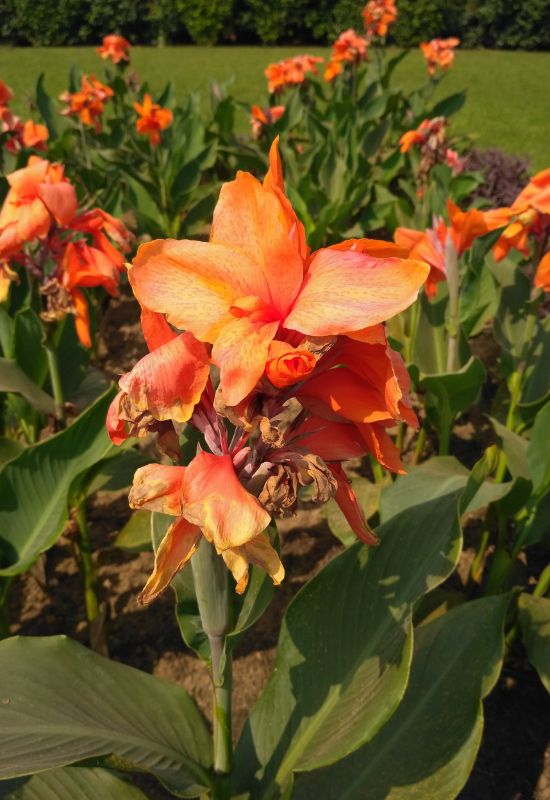
Canna lilies love lots of sunshine and warm weather, so, they can be the ideal exotic perennial for a USDA hardiness zone 9 garden full of light! They are perfect for the East Coast, and for yards in this climate area on the West Coast, as long as you have plenty of water to give them.
Plant the tubers and you will soon see the tropical looking, glossy lance shaped leaves emerge from the soil and grow upright and tall, in shades of green, but also reddish to deep purple, almost black, like in ‘Tropicana Black’!
And then, the long stem will rise to the sunny sky and produce those showy, sword lily like blossoms that amaze us, with their amazing warm palette of colors. Yellow, pink, red, orange, cream white, in all combinations but always overwhelmingly bright!
They do last for a long time as well, usually from July into fall… Everything about Canna indica is superlative and on a large scale, apart from maintenance… in fact, they are very easy to grow and they are quite tough, forming larger and larger clumps that spread year on year.
USDA zone 9 is not suitable for other tropical perennial varieties, like bird of paradise (Strelitzia reginae); it is just a bit too cold, but canna lily is perfect in large borders or even in containers.
7: American Lotus (Nelumbo lutea)
Native of the East Coast of the US, American lotus is naturally suited for sunny ponds in USDA hardiness zone 9. True, water is more available in Florida than Arizona, Texas or California, but as an aquatic perennial, nothing can beat a lotus!
Its snow white, luminous flowers with a bright, almost shining yellow center are spectacular to say the least… they can blossom just above the water level or higher up, showing the upright stems that support them.
And each flower head can be a jaw dropping 12 inches across (30 cm)! They will emerge from decorative buds and last only about three days each, opening in the morning to close again at sunset. But each plant will give you many through the summer months.
And when this spectacle is over, you can still enjoy the alien looking fruits that follow. Then again, the foliage is as spectacular as all the rest. The green and round leaves that spread above the surface can be up to 40 inches across (1.0 meters)!
Everything about American lotus seems to be on a superlative scale, but you can actually grow it in a fairly shallow pond, and it is quite low maintenance as well, and it will spread spontaneously too!
8: Blue Eyed Grass (Sisyrinchium angustifolium)
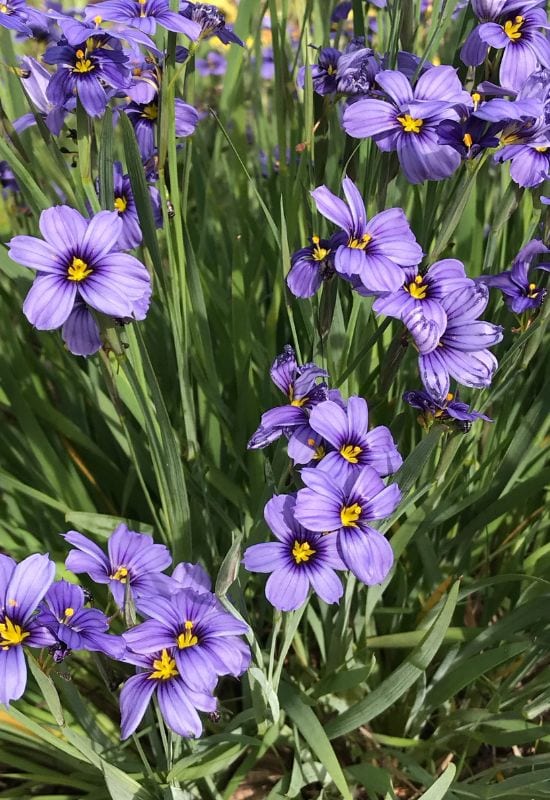
You may have never heard of blue eyed grass, but we also want to offer you varieties that make your sunny garden a bit special. And this perennial is perfect for USDA hardiness zone 9, and very pretty indeed!
The flowers are not huge, only about 1 inch across (2.5 cm) but they are quite beautiful, especially if you plant them in groups. The blooms are quite glossy, with long and broad corrugated petals with fringed tips that curve backwards as they ripen.
As the name suggests, the color is bluish violet, becoming more intense at the center, where you find an extremely vibrant and bright yellow star! Sometimes, they can be of a heavenly sky blue tonality or sometimes energetic cobalt!
There are also varieties in other shades, like Sisyrinchium californicum, super golden, and Sisyrinchium album, snow white… The long and thin, ribbed green leaves, from light to mid, grow upright like those of gladioli, and they do look like blades of grass.
Quite common as a native perennial in California, blue eyed grass has a more temperate personality than some of the exotic varieties for zone 9 we have seen so far. It is excellent in flower beds, rock gardens and for edging, as well as for ground cover.
9: Butterfly Weed (Asclepias tuberosa)
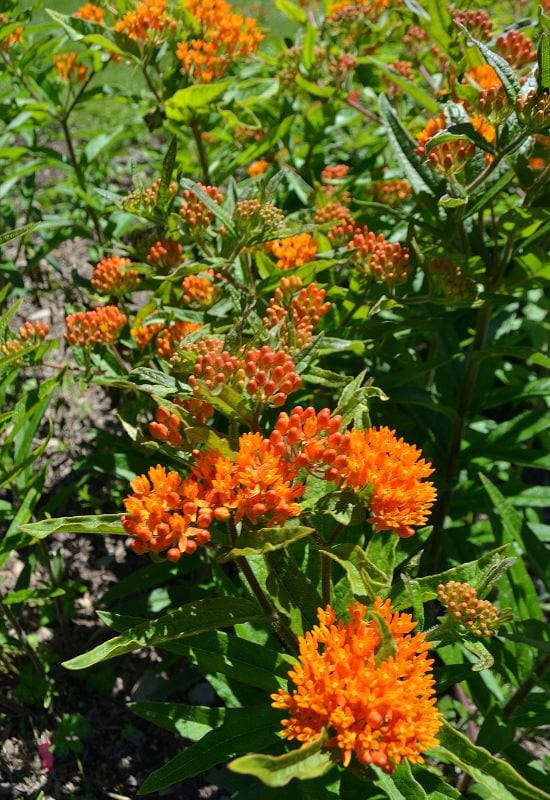
If you live in USDA hardiness zone 9, the chances are that you are in the migratory route of monarch butterflies, and it would be a pity if they skipped your sunny garden. Also attractive to other species, butterfly weed is a classic perennial to attract these wonderful winged insects, also because it blooms just as they are flying by…
But it is also because they cannot miss the super bright orange blossoms full of nectar that they open to the Sun, looking up to the sky… What so more, there are lots of them in each cluster, and they will never stop blossoming all through the summer season!
The flat umbels of vibrant energy are also perfect “landing pads” for them, as well as super attractive and eye catching for us… Sitting on top of dense mounds of hard and lance shaped bright green leaves, they stand out like flames on grass…
Butterfly weed is also very easy to grow and it spreads spontaneously; it has a fairly temperate appearance, suitable for wild meadows and prairies or flower beds and borders in traditional looking gardens, but even in a sunny coastal, Mediterranean or exotic one, it can put on quite a show!
10: Snake Mouth Orchid (Pogonia ophioglossoides)
Fancy growing a real orchid in your sunny USDA zone 9 garden? Famous tropical species like Cattleya or Phalenopsis (moth orchid) only grow in zones 10 and above and they need very special conditions… But you can grow a native variety fro eastern North America, which is equally delightful: snake mouth orchid.
The name may come from the fact that the blooms, looked in profile, may remind you of cobras ready to bite! But look closely and you will see a very gentle and attractive flower… The labellum, the modified petal at the bottom, is spoon shaped and frilled, with a wonderful pattern of vibrant and strong magenta to purple veins, a white “beard” and greenish to bright yellow dots like a tongue.
The other petals (tepals) have literally suave shades, pastel and smooth that can range from lavender to rose or pink. Each is 1 inch across (2.5 cm) and individual on the long upright and straight stems. This orchid only has one leaf, lance shaped, green and at the base. Maybe more like a swan than a snake, thinking about it…
As long as you have plenty of water, snake mouth orchid will thrive in a sunny spot in a USDA zone 9 garden, but it will also like very wet conditions, typical of this climate area on the East Coast. Beds, ponds or containers are equally suitable.
11: Standing Cypress (Ipomopsis rubra)
For a total change of look, color and humidity, standing cypress is a very herbaceous looking perennial that will grow well in USDA hardiness zone 9 in full Sun. A common wildflower native of the southeastern United States, it will bloom all through the summer months even in dry regions, attracting lots of butterflies.
This is because the long racemes of flowers can be seen from a distance. Each blossom is tubular but it flares quite open into a star shape at the mouth, which is also what hummingbirds love…
The blossoms are bright scarlet with white dashes towards the center, with long, protruding stamens. What is more, it is very tall and narrow… The plant looks like a tower, or a long column, red at the top and green in its lower part.
But the foliage is attractive too… Growing like a coat around the stem, it is literally like lace, very finely cut, and wonderfully textured. An alternative is its sister, skyrocket (Ipomoisaggregata) with extremely elegant thin blooms where white is predominant and bright red spots inside become a full flaming trumpet on the outside.
Ideal for wild meadows and prairies in traditional looking gardens or even naturalized areas in harsh land, standing cypress is also excellent for a strong vertical accent in flower beds and herbaceous borders in the Sun.
12: ‘Sulphur Queen’ Peruvian Lily (Hymenocallis ‘Sulphur Queen’)
Back to the exotic spirit you can have in USDA zone 9 sunny gardens, another native perennial of the Americas is Peruvian lily, and ‘Sulphur Queen’ one of its most striking varieties!
The large blooms will come in clusters of up to 6 atop a thick and straight stem in mid summer, and they will light up your yard with its energy. Reminiscent of daffodils, the flowers have a central frilled crown, saucer shaped, while at its back, you will see 6 longer, narrow spider like petals that look like the rays of the Sun!
And there is more along this leitmotif… Its amazingly bright golden yellow color, which is enhanced by the smooth and glossy surface of the blossoms themselves. At the very center, as if to point to the outer tepals, you will see six “spokes” of an amazingly rich green color!
What is more, they have a strong citrus like fragrance. The fleshy strap shaped and rich green leaves at the base also add to its decorative value. For an alternative, its relative ‘Zwanenburg’ (Hymenocallis x festalis ‘Zwanenburg’) has snow white flowers that can reach 5 inches across (12 cm)!
Winner of the Award of Garden Merit by the Royal Horticultural Society, ‘Sulphur Queen’ Peruvian lily is striking and tropical looking perennial for flower beds, borders and containers, a real star!
13: Copper Top Pitcher Plant (Sarracenia flava var. cuprea)
You can be really creative in USDA hardiness zone 9! In fact, you can even grow some carnivorous perennials to surprise your guests! And there are local varieties, like the striking copper to pitcher plant, that really love sunny positions!
The first display they will offer you is their spring bloom, with yellow flowers with 5 drooping broad and lip shaped petals, bright yellow and nodding under equally attractive lime colored sepals, very exotic and about 2 inches across (5.0 cm).
The blossoms also have a strong and sweet musty scent! The pitchers will develop later, tall and cone shaped, with a glossy surface with reddish purple veins over a bright green canvas with yellowish overtones.
You will find these shades repeated in the heart shaped lids, which also have a distinctive copper tonality! The leaves are long and sword shaped, green, erect and they grow back every year.
Ideal for boggy gardens, wetland and especially suited to USDA zone 9 gardens on the East Coast and in Florida, copper top pitcher plant is a native wonder for an exotic and surreal looking yard, near ponds or in rain gardens. But you can grow it in dry regions too, as long as you have plenty of water.
14: Lotus Vine (Lotus maculatus)
USDA hardiness zone 9 is filling with lots of brightly colored parrots! But they are not birds… In fact they are Sun loving perennials, and they have flown onto the continent from the Canary and Cape Verde Islands, on the other side of the Atlantic.
The distinctive trait of this lovely trailing plant is that its flowers look, you guessed, like parrot beaks! Botanists believe that this is actually to attract these talkative animals to pollinate them… They come profusely all through the spring months and in early summer too, unless it gets too hot.
And they are impossible to miss, because they have strong yellow and orange in them, with flaming red tips! The foliage is super decorative as well, finely textured and with whorls o thin, needle like but soft looking leaves in shades of pale blue and green!
No wonder lotus vine is also called golden parrot’s beak… And it is perfect for hanging baskets, slopes, rock gardens and as ground cover, to cascade over walls and in Mediterranean style landscaping in sunny USDA zone 9 gardens.
15: African Daisy (Arctotis x hybrida)
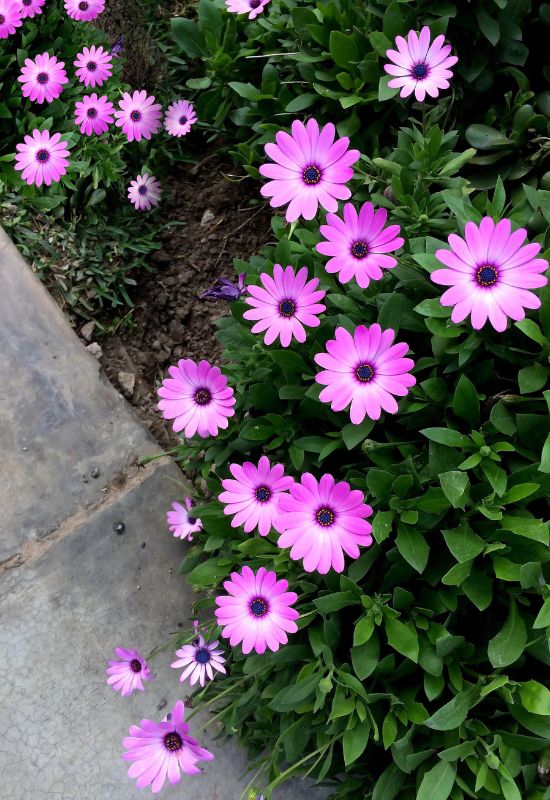
Let us reconcile the two spirits of USDA hardiness zone 9 with a sunny flower: African daisy! It has a traditional look, but it also adds the bright touch of exotic flowers!
This common name actually indicates two different groups of plants, and while you cannot grow African daisies of the genus Osteospermum, because they need warmer climates, you can happily plant those of Arctotisgenus!
And there are lots of varieties to choose from! With yellow, white, orange, pink, red, magenta and even bicolor blossoms, these small but showy beauties always give you excellent displays.
Of course, the waxy and shiny surface of their petals help energize the blooms, that can be up to 3.3 inches wide (8.0 cm)! Opening for a very long time, from May to the end of the season, they overshadow the finely textured foliage at the base, which can be green, blue or even silver!
And African daisy seems to understand USDA zone 9 very well, because it can color your flower beds, rock gardens or containers in most conditions we find in this climate region, from dry to humid!
You can really get the best of both words with uSDA zone 9 sun loving perennials
For wet or dry regions, with temperate and traditional, or exotic and unusual looking blooms and leaves, there are really lots of beautiful perennials that love sunny gardens like yours, so you can really have the best of both worlds if you know which ones to choose!

Written By
Amber Noyes
Amber Noyes was born and raised in a suburban California town, San Mateo. She holds a master’s degree in horticulture from the University of California as well as a BS in Biology from the University of San Francisco. With experience working on an organic farm, water conservation research, farmers’ markets, and plant nursery, she understands what makes plants thrive and how we can better understand the connection between microclimate and plant health. When she’s not on the land, Amber loves informing people of new ideas/things related to gardening, especially organic gardening, houseplants, and growing plants in a small space.

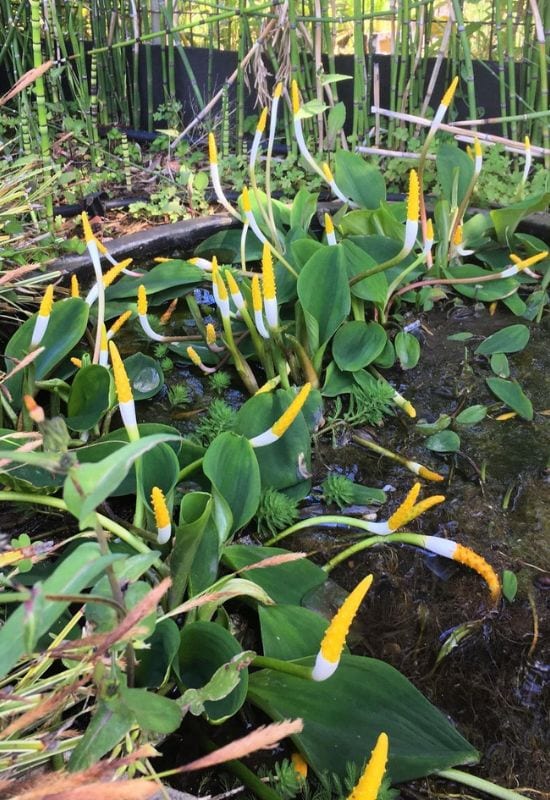
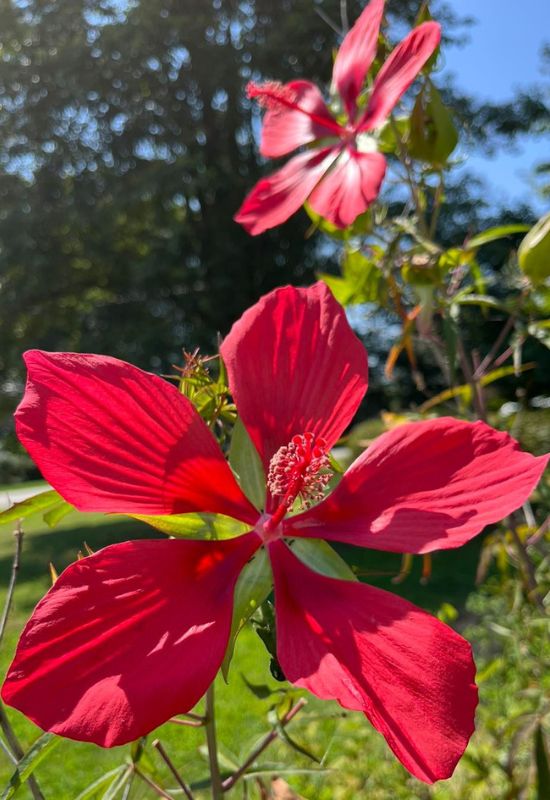
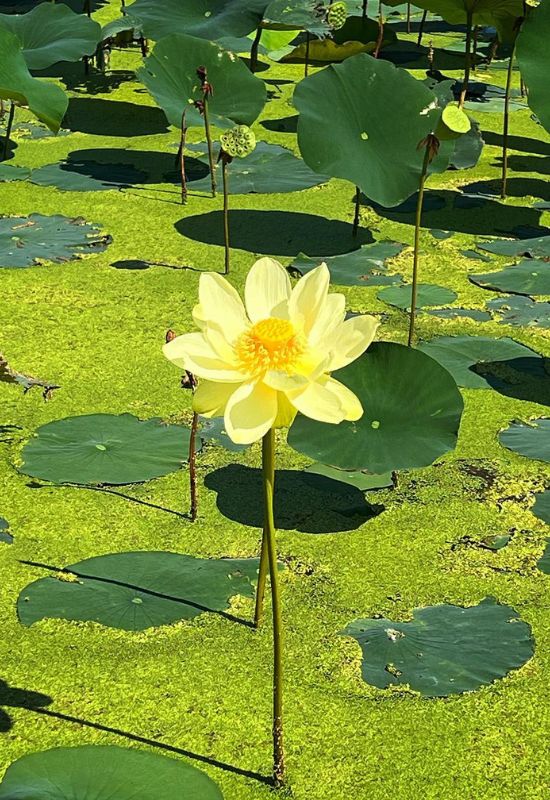
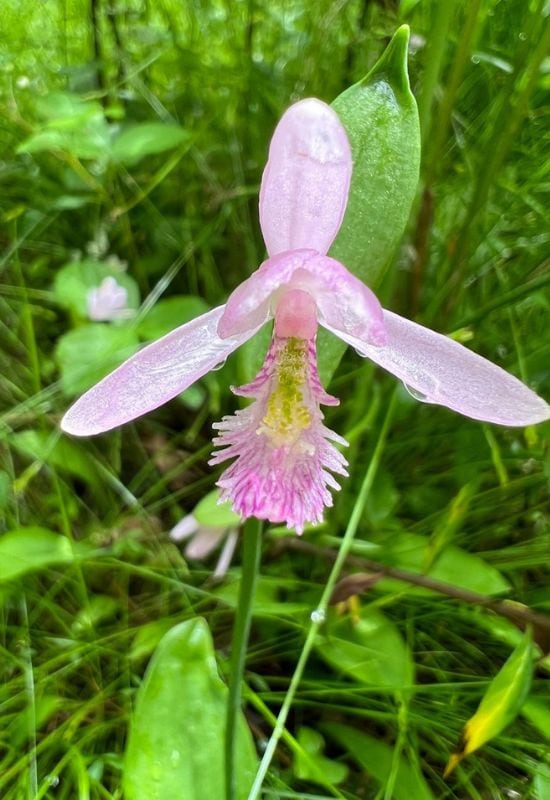
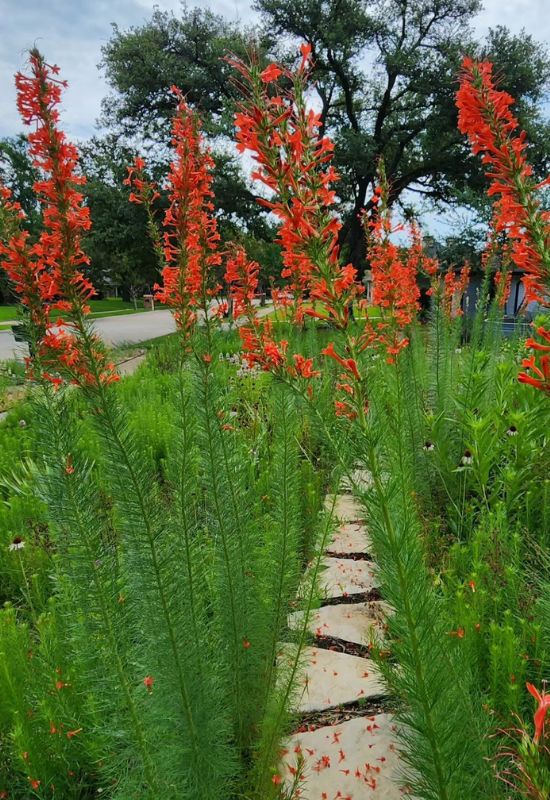
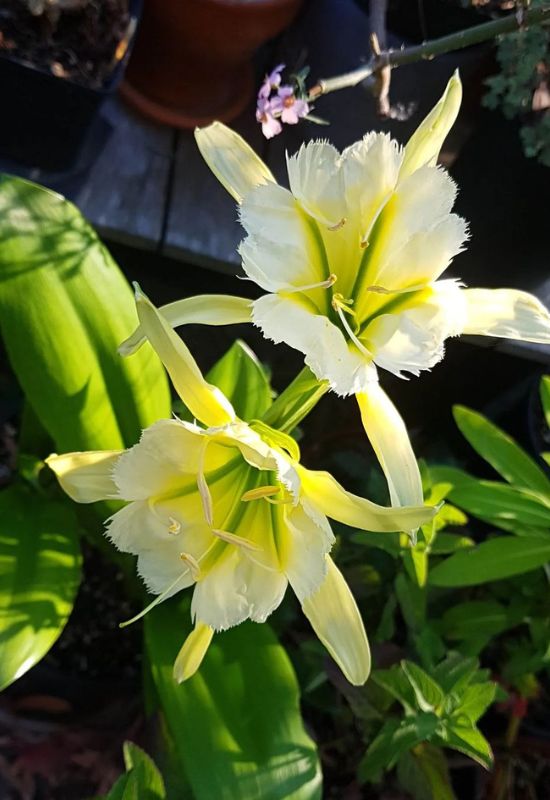
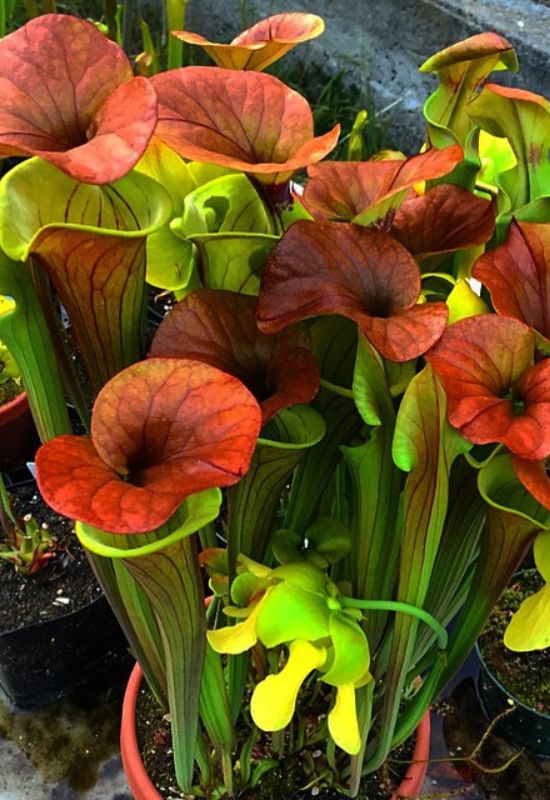
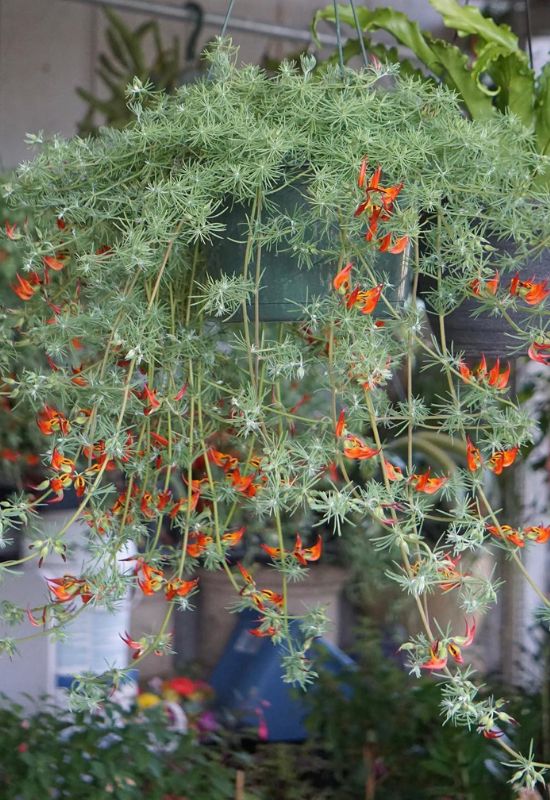
Love your detailed information, especially the size of mature plants and when they bloom. I’m still learning what grow well in my hot, dry planting areas by my driveway and front door. I am most interested in native plants that are perennial bloomers. Your photos are also appreciated.